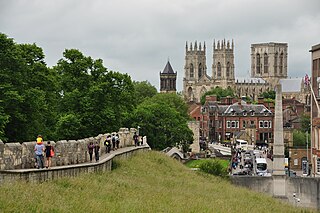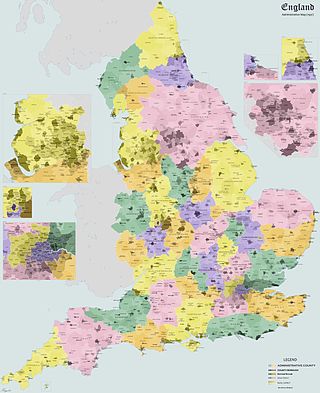| Brigade | Notes | Fate in the 1974 reorganisation |
|---|
| Barnsley County Borough FB | | Merged to form South Yorkshire FS |
| Barrow-in-Furness County Borough FB | | Merged to form Cumbria FS |
| City of Bath FB | | Merged to form Avon County FB |
| Bedfordshire FB | Luton County Borough formed own brigade in 1964 | Reabsorbed Luton County Borough FB |
| Berkshire and Reading FB | Combined brigade for administrative county of Berkshire, Reading County Borough, later | Lost Abingdon, Didcot and Wantage to Oxfordshire and gained Slough from Buckinghamshire |
| Birkenhead County Borough FB | | Merged to form Merseyside FS |
| City of Birmingham FB | | Merged to form West Midlands FS |
| Blackburn County Borough FB | | Merged into Lancashire County FS |
| Blackpool County Borough FB | | Merged into Lancashire County FS |
| Bolton County Borough FB | | Merged to form Greater Manchester FS |
| Bootle County Borough FB | | Merged to form Merseyside FS |
| Bournemouth County Borough FB | | Merged into Dorset FS |
| City of Bradford FB | | Merged to form West Yorkshire FS |
| Brighton County Borough FB | | Merged into East Sussex FB |
| City of Bristol FB | | Merged to form Avon County FB |
| Buckinghamshire FB | | Lost Slough to Berkshire FB |
| Burnley County Borough FB | | Merged into Lancashire County FS |
| Burton upon Trent County Borough FB | | Merged into Staffordshire FS |
| Bury County Borough FB | | Merged to form Greater Manchester FS |
| Cambridgeshire and Isle of Ely FB | Combined brigade for administrative counties of Cambridgeshire and the Isle of Ely until 1965, when Cambridgeshire and Isle of Ely county council formed | Merged to form Cambridgeshire FS |
| City of Canterbury FB | Formed part of combined brigade, known as Kent and Canterbury FB in Canterbury and Kent FB in remainder of County. | |
| City of Carlisle FB | | Merged to form Cumbria FS |
| Cheshire FB | | Lost area to Greater Manchester, Merseyside FS |
| City of Chester FB | | Merged into Cheshire FS |
| Cornwall FB | | No change (later became Cornwall County FB) |
| City of Coventry | | Merged to form West Midlands FS |
| Croydon County Borough FB | Absorbed by London FB 1965 | |
| Cumberland FB | | Merged to form Cumbria FS |
| Darlington County Borough FB | | Merged into County Durham County FB |
| Derby County Borough FB | | Merged into Derbyshire FS |
| Derbyshire FB | | Absorbed Derby County Borough FB |
| Devon FB | | Absorbed Exeter and Plymouth |
| Dewsbury County Borough FB | | Merged to form West Yorkshire FS |
| Doncaster County Borough FB | | Merged to form South Yorkshire FS |
| Dorset FB | | Absorbed Bournemouth County Borough FB |
| Dudley County Borough FB | Took in areas from Staffordshire FB 1967 | Merged to form West Midlands FS |
| Durham County FB | Lost areas to Hartlepool CB 1967, Teesside CB 1974 | Later absorbed into Cleveland County Fire Brigade |
| East Ham County Borough FB | Absorbed by London FB 1965 | |
| East Riding of Yorkshire FB | | Area split to form North Yorkshire FS and Humberside FS |
| East Sussex FB | | Lost some area to West Sussex FS, gained Brighton, Eastbourne and Hastings |
| Eastbourne County Borough FB | | Merged into East Sussex FS |
| Essex FB | Lost nine stations to London FB 1965. | Absorbed Southend County Borough FB |
| City of Exeter FB | | Merged into Devon FS |
| City of Gloucester FB | | Merged into Gloucestershire FS |
| Gloucestershire | | Lost area to Avon County FS |
| Great Yarmouth County Borough FB | | Merged into Norfolk FS |
| Grimsby County Borough FB | | Merged to form Humberside FS |
| Halifax County Borough FB | | Merged to form West Yorkshire FS |
| Hampshire FB | | Gained Portsmouth, Southampton, lost Christchurch area to Dorset FS |
| Hastings County Borough FB | | Merged into East Sussex FS |
| Herefordshire FB | | Merged to form Hereford and Worcester FS |
| Hertfordshire FB | Lost East Barnet to London FB but gained Potters Bar from Middlesex 1965 | No change |
| Holland FB County Lincolnshire | | Merged to form Lincolnshire FS |
| Huddersfield County Borough FB | | Merged to form West Yorkshire FS |
| Hull County Borough FB | | Merged to form Humberside FS |
| Huntingdonshire FB | Merged with Soke of Peterborough FB 1965 to form Huntingdon and Peterborough FB | Merged into Cambridgeshire FS |
| Huntingdon and Peterborough FB | Formed from Soke of Peterborough FB and Huntingdonshire FB in 1965, when Huntingdon and Peterborough County Council formed | Merged into Cambridgeshire FS |
| Isle of Wight FB | | No change |
| Kent FB | Combined brigade for Canterbury County Borough and administrative county of Kent.
Lost part of area (present London Boroughs of Bexley and Bromley) to London FB 1965 | No further change in 1974 |
| Kesteven County FB | | Merged to form Lincolnshire FS |
| Lancashire County FB | | Lost area to Cumbria FS, Greater Manchester FS and Merseyside FS. |
| City of Leeds FB | | Merged to form West Yorkshire FS |
| City of Leicester FB | | Merged to form Leicestershire FS |
| Leicestershire and Rutland FB | Combined brigade for two administrative counties | Merged to form Leicestershire FS |
| City of Lincoln FB | | Merged to form Lincolnshire FS |
| Lindsey County FB, Lincolnshire | | Merged to form Lincolnshire FS |
| City of Liverpool FB | | Merged to form Merseyside FS |
| London FB | Covered County of London until 1965, Greater London thereafter | No further change |
| Luton County Borough FB | Separated from Bedfordshire FB 1964 | Bedfordshire FS |
| City of Manchester FB | | Merged to form Greater Manchester FS |
| Middlesbrough County Borough FB | Became part of Teesside County Borough FB in 1974 | Merged to form Cleveland County Fire Brigade |
| Middlesex FB | Abolished 1965 to London FB except for Potters Bar to Hertfordshire FB,
Staines and Sunbury to Surrey FB | |
| Newcastle and Gateshead Joint FB | Combined brigade for two county boroughs | Merged to form Tyne and Wear FS |
| Norfolk FB | | |
| North Riding of Yorkshire FB | Lost area to Teesside County Borough FB in 1968 | Merged to form Cleveland FS |
| Northampton County Borough FB | | Merged into Northamptonshire FS |
| Northamptonshire FB | | No change |
| Northumberland FB | | Merged to form Tyne and Wear FS |
| City of Norwich FB | | Merged into Norfolk FS |
| City of Nottingham FB | | Merged into Nottinghamshire FS |
| Nottinghamshire FB | | |
| Oldham County Borough FB | | Merged to form Greater Manchester FS |
| City of Oxford FB | | Merged into Oxfordshire FS |
| Oxfordshire FB | | |
| Soke of Peterborough FB | Merged with Huntingdonshire FB 1965 to form Huntingdon and Peterborough FB.
(City of) Peterborough Volunteer FB also retained by county council | (Cambridgeshire FS) |
| City of Plymouth FB | | Merged into Devon FS |
| City of Portsmouth FB | | Merged into Hampshire FS |
| Preston County Borough FB | | Merged into Lancashire County FS |
| Rochdale County Borough FB | | Merged to form Greater Manchester FS |
| Rotherham County Borough FB | | Merged to form South Yorkshire FS |
| City of Salford FD | | Merged to form Greater Manchester FS |
| St Helens County Borough FB | | Merged to form Merseyside FS |
| City of Sheffield FB | | Merged to form South Yorkshire FS |
| Shropshire FB | | No change |
| Smethwick and West Bromwich Joint FB | Combined brigade for two county boroughs.
Abolished 1967: Became Warley County Borough FB and West Bromwich County Borough FB | Merged to form West Midlands FS |
| Solihull County Borough FB | Separated from Warwickshire FB 1964 | Merged to form West Midlands FS |
| Somerset FB | | Lost area to Avon FS |
| South Shields County Borough FB | | Merged to form Tyne and Wear FS |
| Southampton County Borough FB | Renamed Southampton City FB 1964 | To Hampshire FB |
| Southend County Borough FB | | Merged into Essex FS |
| Southport County Borough FB | | Merged to form Merseyside FS |
| Staffordshire FB | Lost area to various county boroughs in 1967. | Gained Stoke-on-Trent, lost area to West Midlands |
| Stockport County Borough FB | | Merged to form Greater Manchester FS |
| Stoke-on-Trent County Borough FB | | Merged into Staffordshire FS |
| Suffolk and Ipswich FB | Combined brigade for administrative counties of East and West Suffolk and Ipswich county borough. | Merged to form Suffolk FS |
| County Borough of Sunderland FB | | Merged to form Tyne and Wear FS |
| Surrey FB | Lost 10 stations to London FB in 1965. But gained Staines and Sunbury from Middlesex | No further change |
| Teesside County Borough FB | Formed from Middlesbrough County Borough FB, parts of Durham FB, North Riding (Yorkshire) FB 1968 | Cleveland County Fire Brigade |
| Tynemouth County Borough FB | | Merged to form Tyne and Wear FS |
| Wakefield County Borough FB | | Merged to form West Yorkshire FS |
| Wallasey County Borough FB | | Merged to form Merseyside FS |
| Warley County Borough FB | Formed 1967 from the separation of Smethwick and West Bromwich Joint FB | West Midlands FS |
| Warrington County Borough FB | | Merged to form Cheshire FS |
| Warwickshire FB | Solihull formed own brigade 1964 | Lost area to West Midlands FS |
| West Bromwich County Borough FB | Formed 1967 from the separation of Smethwick and West Bromwich Joint FB | West Midlands FS |
| West Ham County Borough FB | Absorbed by London FB 1965 | |
| West Hartlepool County Borough FB | Merged with part of Durham County Fire Brigade to form Hartlepool County Borough FB in 1967 | Merged with Teesside County Borough FB and parts of Durham and North Riding Fire Brigades in 1974 to form Cleveland County FB |
| West Riding of Yorkshire FB | | Split into West Yorkshire FS and South Yorkshire FS with losses to Cumbria FS, Humberside FS and Lancashire County FS |
| West Sussex FB | | Gained area from East Sussex |
| Westmorland FB | | Merged to form Cumbria FS |
| Wigan County Borough FB | | Merged to form Greater Manchester FS |
| Wiltshire FB | | No change |
| Wolverhampton County Borough FB | | Merged to form West Midlands FS |
| Worcester City and County FB | Combined brigade for county borough of Worcester and administrative county of Worcestershire | Merged to form Hereford and Worcester FS |
| City of York FB | | Merged to form North Yorkshire FS |












